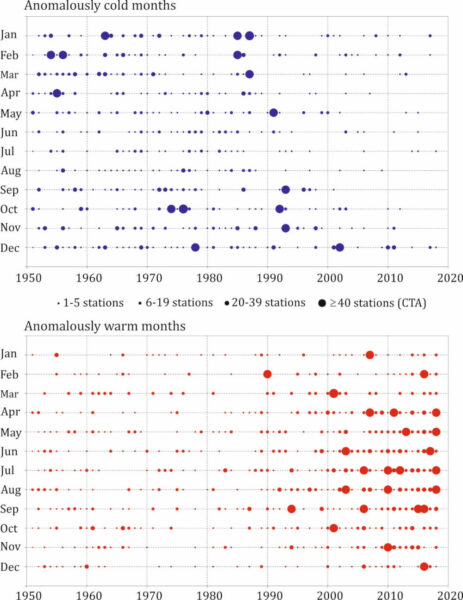In recent decades, the observed changes in the occurrence of extreme climate events have aroused particular interest, especially the occurrence of periods with temperatures significantly different from the long-term average in a given location. Very high or low temperature, unusual in a given area, is associated with multiple dangerous social and economic consequences and affects the functioning of the entire natural system. Cases of extremely warm or cool weather with a large spatial extent are are of particular importance.
The increasing frequency of such thermal anomalies prompted dr hab. Zuzanna Bielec-Bąkowska, in collaboration with prof. dr hab. Robert Twardosz from the Jagiellonian University, to determine the type, frequency, location and spatial extent of the aforementioned, large-area monthly thermal anomalies (called continental) in Europe from the mid-twentieth century and to try to determine the circulation conditions in which they occurred.
The obtained results confirmed the described progressive climate warming. There was found a clear increase in the spatial extent of the considered positive anomalies (characterized by exceptionally high temperature), their earlier appearance during the year and the extension of their period of occurrence. Strong, extensive and long-lasting high-pressure systems played a special role in the formation of such periods. In the warm season, low-pressure systems and the associated advection of hot tropical air were no less important.
Twardosz R., Bielec-Bąkowska Z., 2022, Continental-scale monthly thermal anomalies in Europe during the years 1951-2018 and their occurrence in relation to atmospheric circulation, Geographia Polonica, 95, 1, 97-116, https://doi.org/10.7163/GPol.0228.






